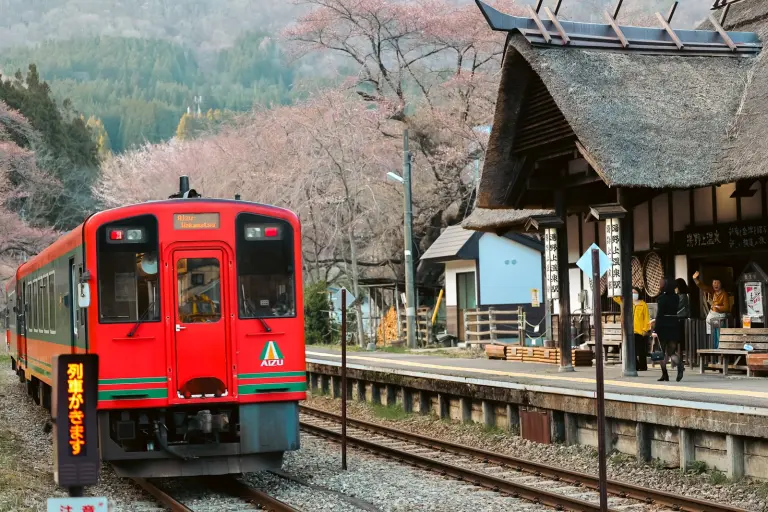Nestled beneath a colossal rock in the picturesque Jøssingfjord, the Helleren Farm stands as a vivid testament to human ingenuity and adaptability in the face of nature. With a history spanning thousands of years, this site is not only a unique cultural destination but also a fascinating story of human life intertwined with the wilderness of Scandinavia.
A Masterpiece of Architecture Within Nature
The Helleren Farm is located in the town of Sokndal, along the famous North Sea Route connecting Egersund and Flekkefjord. From afar, the two small houses—painted red and white—stand out vividly against the gray tones of the massive rock backdrop and the fjord’s blue-green waters.
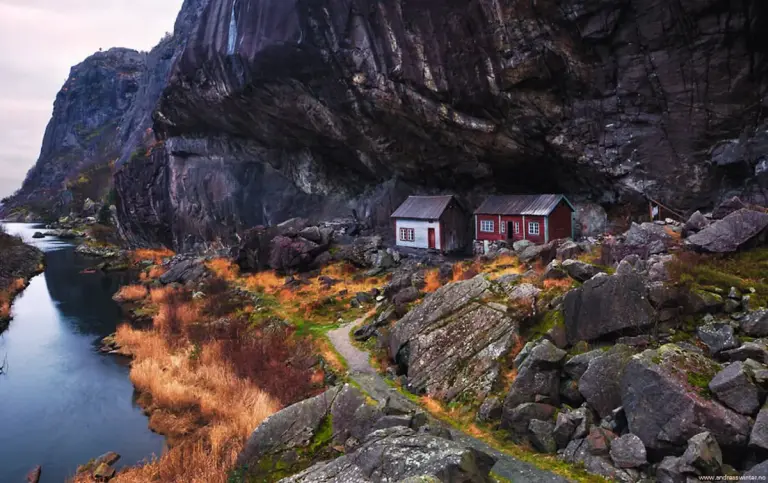
This natural shelter, called Helleren, is a rock overhang measuring 60 meters in length and 10 meters in depth, offering perfect protection for the two traditional wooden houses built in the 19th century. However, the history of Helleren stretches far deeper into the past. Archaeological evidence suggests that the site has been used since the Stone Age, serving as a temporary refuge for hunters and fishermen.
The two current houses, built in the 1800s, may incorporate architectural elements from as far back as the 16th century. They are prime examples of Norwegian rural architecture, featuring wooden frames, small windows, and simple chimneys. What makes them truly unique is their lack of traditional roofs—the colossal rock above acts as a natural shield, protecting the houses from rain, snow, and wind.
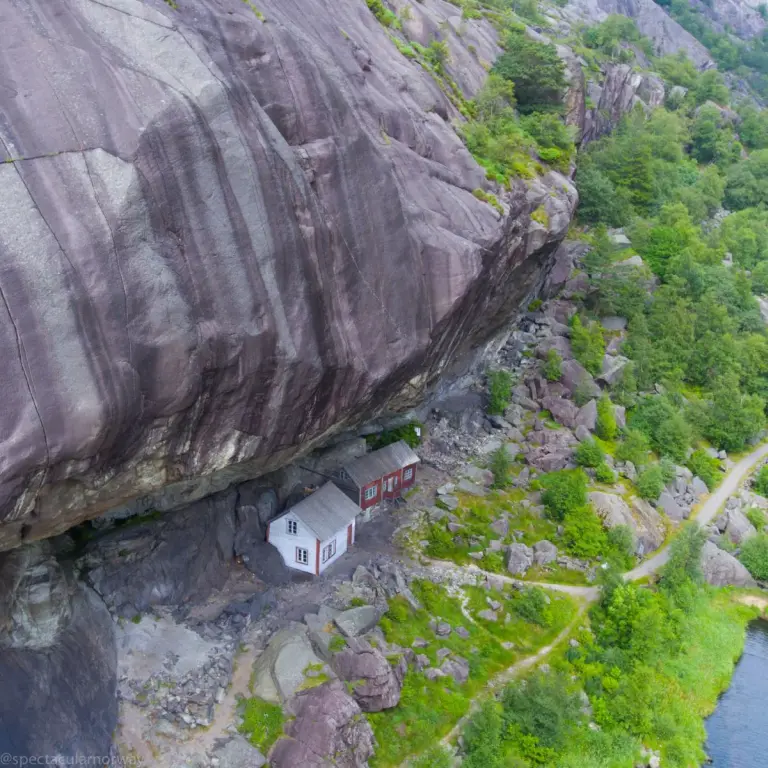
A Timeless Journey Beneath the Rock
Helleren is not just a home; it is a testament to the enduring resilience of human life through history.
- A Life of Hardship and Adaptation
The houses at Helleren were inhabited until the 1920s. The last residents, two sisters, lived without electricity, running water, or modern conveniences, embodying a simple yet deeply connected life with nature. - Preserving Heritage
Today, the farm is managed by the Dalane Folk Museum, which is responsible for preserving and sharing this precious cultural heritage with the public. Visitors can step inside the houses to discover how people once lived under the harsh conditions of the natural world.
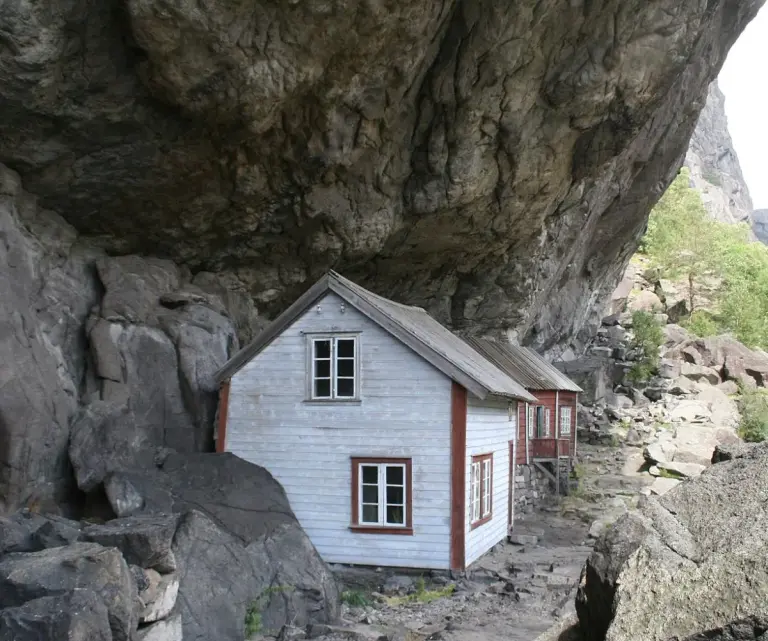
Jøssingfjord: A Blend of Scenery and History
Beyond being home to Helleren Farm, Jøssingfjord is renowned for its breathtaking landscapes and historical significance.
- Natural Beauty
Jøssingfjord is framed by steep cliffs and ends with a large rocky shore. It is the perfect spot to marvel at Norway’s serene natural beauty and enjoy the tranquility of the fjord. - A Mark of World War II
In 1940, Jøssingfjord was the site of the Altmark Incident during World War II, where British forces liberated prisoners from a German oil tanker. This event became a pretext for Germany’s invasion of Norway, making Jøssingfjord a significant piece of wartime history.
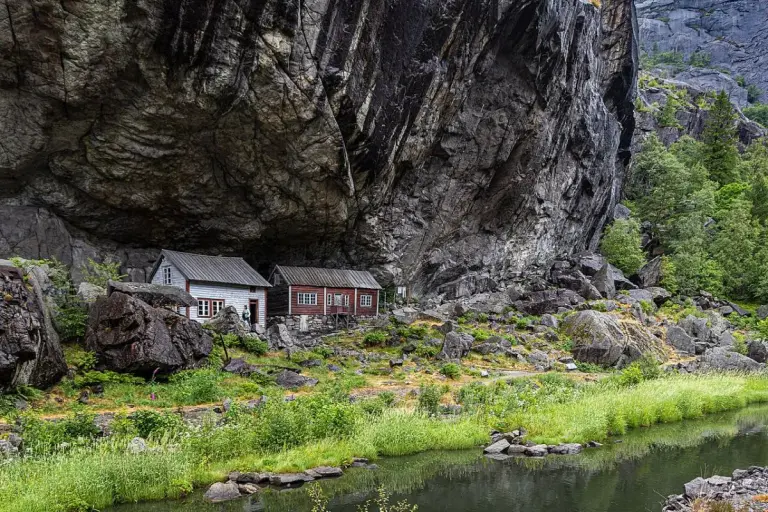
A Journey to Helleren: Accessible Yet Majestic
To reach Helleren, you can park across the river and walk about five minutes to the site. During summer, the area offers basic amenities like restrooms and a kiosk selling simple refreshments.
Once there, you’ll not only marvel at the magical beauty of the rock-sheltered houses but also feel a profound connection between the past and the present. Remember to respect the site, as it is a cultural heritage that must be preserved for future generations.
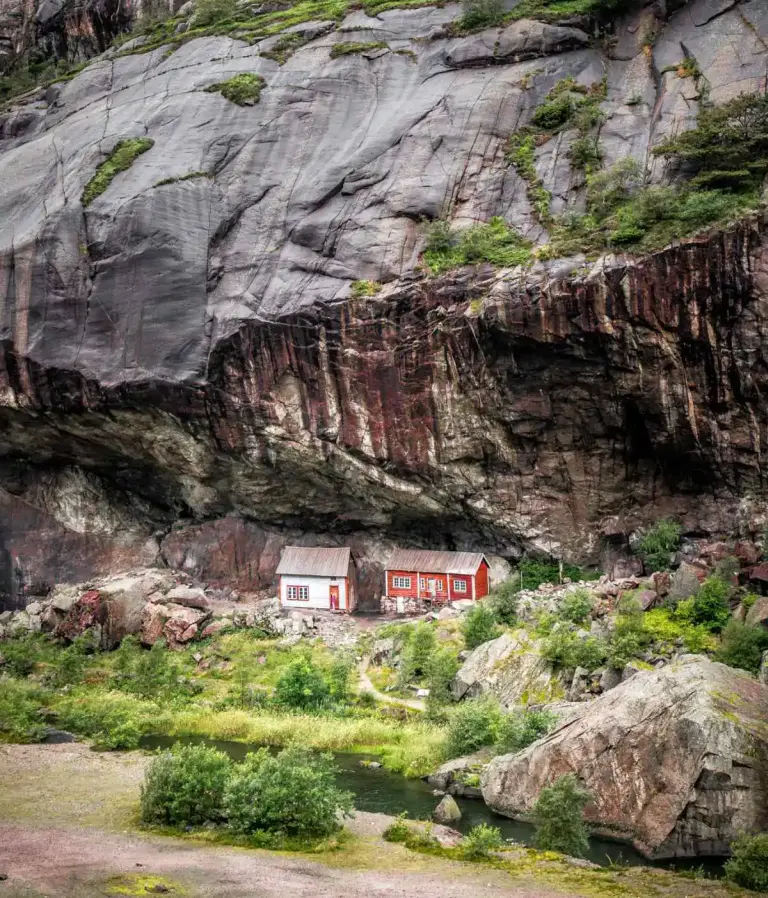
Helleren: A Tale of Humanity and Nature
Helleren Farm is more than just an architectural wonder; it is a reminder of how humans have harmoniously coexisted with nature for centuries. From using natural rock formations as shelters to preserving cultural heritage for future generations, Helleren tells a story of resilience, creativity, and a deep appreciation for history.
If you’re seeking a unique destination where natural beauty merges with cultural and historical depth, let Helleren be part of your Norwegian journey. A visit here will undoubtedly leave you with unforgettable memories.




